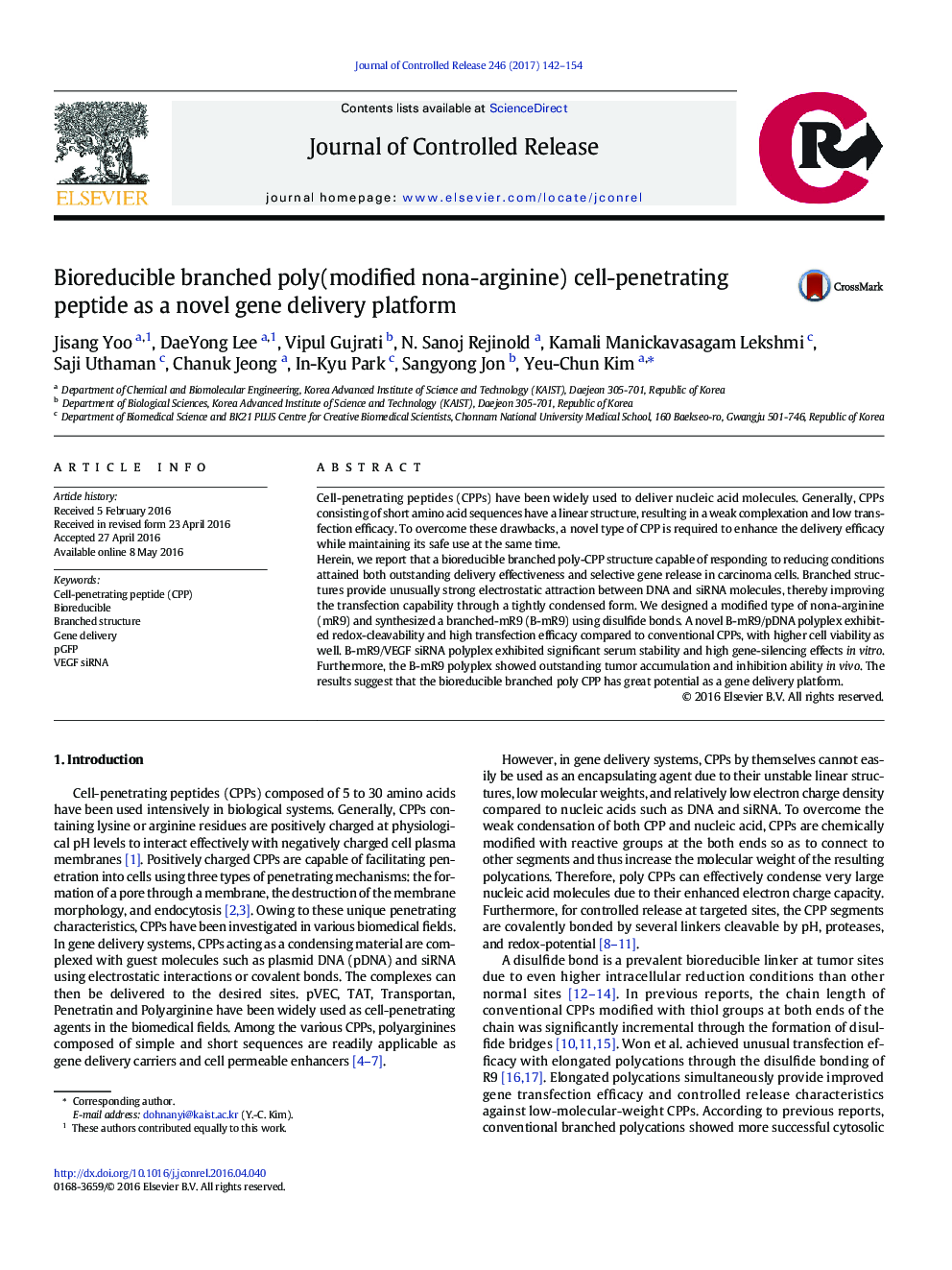| Article ID | Journal | Published Year | Pages | File Type |
|---|---|---|---|---|
| 5434022 | Journal of Controlled Release | 2017 | 13 Pages |
Cell-penetrating peptides (CPPs) have been widely used to deliver nucleic acid molecules. Generally, CPPs consisting of short amino acid sequences have a linear structure, resulting in a weak complexation and low transfection efficacy. To overcome these drawbacks, a novel type of CPP is required to enhance the delivery efficacy while maintaining its safe use at the same time.Herein, we report that a bioreducible branched poly-CPP structure capable of responding to reducing conditions attained both outstanding delivery effectiveness and selective gene release in carcinoma cells. Branched structures provide unusually strong electrostatic attraction between DNA and siRNA molecules, thereby improving the transfection capability through a tightly condensed form. We designed a modified type of nona-arginine (mR9) and synthesized a branched-mR9 (B-mR9) using disulfide bonds. A novel B-mR9/pDNA polyplex exhibited redox-cleavability and high transfection efficacy compared to conventional CPPs, with higher cell viability as well. B-mR9/VEGF siRNA polyplex exhibited significant serum stability and high gene-silencing effects in vitro. Furthermore, the B-mR9 polyplex showed outstanding tumor accumulation and inhibition ability in vivo. The results suggest that the bioreducible branched poly CPP has great potential as a gene delivery platform.
Graphical abstractDownload high-res image (246KB)Download full-size image
